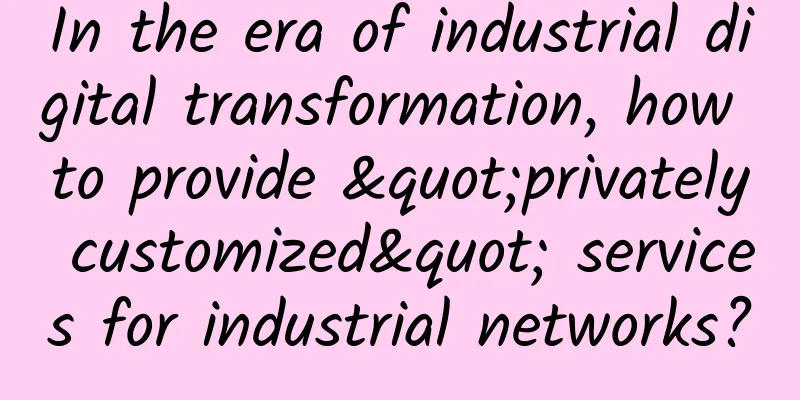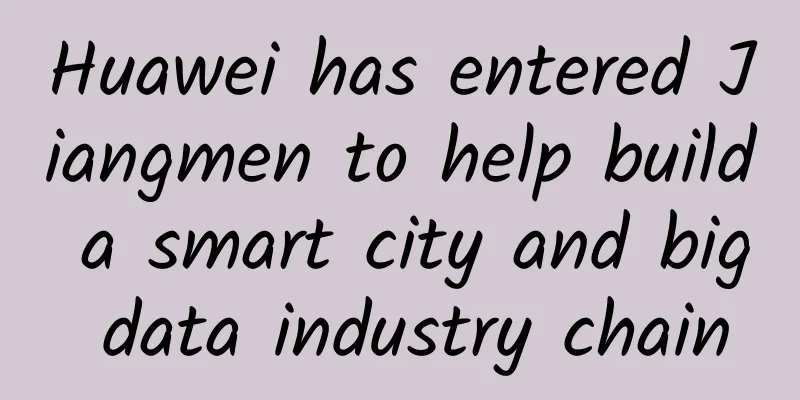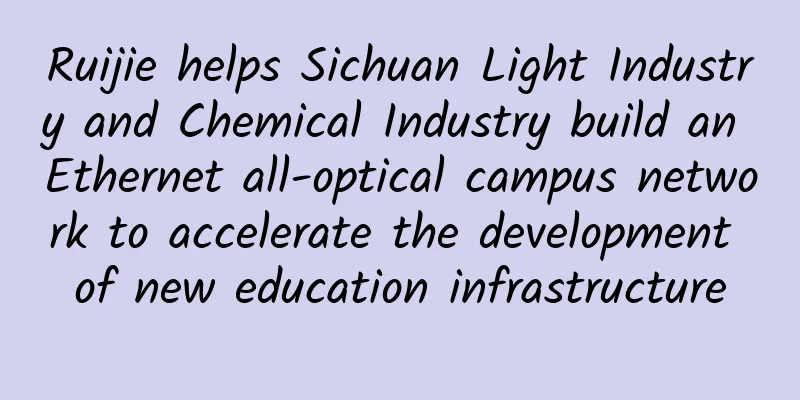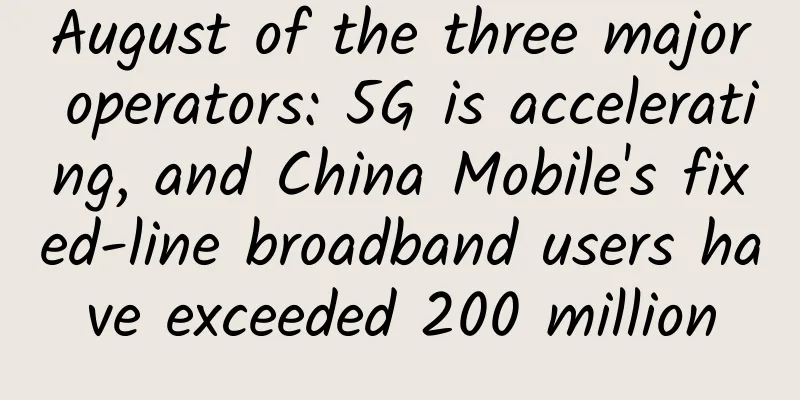In the era of industrial digital transformation, how to provide "privately customized" services for industrial networks?

|
[51CTO.com original article] In recent years, whether it is Germany's "Industry 4.0 Plan", the United States' "Industrial Internet", or China's intelligent transformation and upgrading, the statements are different, but the goal is the same - the digital transformation of industry. It is certainly no coincidence that these major countries in the world have proposed industrial upgrading. From a micro perspective, digital transformation allows technology and business to truly interact, helping industrial customers to improve efficiency and shorten production process cycles; from a macro perspective, the global industrial landscape is being reconstructed, and the strength of industry is closely related to national competitiveness. The results of digital transformation even directly determine the country's discourse power in the next few decades. After nearly 30 years of vigorous development, China is also eager to move from an industrial power to the "middle and high end" of the global value chain. However, although the goal of industrial digital transformation is clear, how to plan the path to the goal is a big problem. From the perspective of the industry, which links should be improved in industrial digital transformation? How should industrial users effectively plan their own transformation characteristics? More specifically, how can IT and OT be effectively integrated? How to integrate different automation equipment in the production process? How can new IoT devices maintain stable data transmission? ... With a series of question marks, the reporter interviewed senior experts, users, and manufacturer technical experts in the field of industrial digital transformation, and through their sharing, help people formulate transformation plans more clearly.
Digitalization "lights up" the future of industry Wang Xuede, deputy secretary-general of the China Industrial Communications Association and director of the Digital Economics Group of the China Urban Science Research Association, told reporters that industry is an important cornerstone of national development. The connotation of today's industrial parks is much wider than the coverage of traditional industries. Industrial technology parks such as Haier, Hisense, Sany Heavy Industry, and Xuzhou Heavy Industry have a factory area larger than that of an ordinary town. The information construction of the park is more complex, and the demand for intelligence is more urgent. He believes that the United States and Germany have a lot of experience in this regard that can be used for reference by China. Wang Xuede gave an example, saying that he had visited the Yili milk factory. In the factory, the production line has long realized one code for each box and one code for each item. No human intervention is required throughout the process, but each box of milk can be traced. "Now many emerging technologies are playing a huge role in the industrial manufacturing industry. Whether it is the informatization of production equipment, the integration of numerical control systems, or the use of big data technology for management and regulation, the original industrial system can become more efficient and cost-effective." Wang Xuede said that for industrial customers, through intelligent manufacturing, not only can production efficiency be improved, but also product quality can be improved, the assembly line can be managed more scientifically, and product quality can be more comprehensively controlled. "Many industrial customers may not have a particularly clear understanding at the beginning, but in the process of continuous intelligent transformation, they gradually discover the value brought by digital transformation, and then embrace transformation and upgrading more quickly and openly." Regarding the current level of IT informatization in the domestic industrial market, Wang Xuede said that there are three aspects that should be strengthened and improved: First, at the macro level, relevant state departments should provide a more benign development environment, and through tax incentives and incentive policies, make industrial customers more willing to invest in IT construction. Secondly, from the perspective of industrial users themselves, China's entire industrial foundation is not weak, but enterprises must have a sense of urgency for development, always be alert, and make technical preparations in advance. He also emphasized that many companies are reluctant to invest in informatization. In fact, IT informatization construction is very cost-effective. Many professional industrial automation equipment and network communication equipment can bring more stable and secure protection to industrial communication systems and production systems. As the saying goes, "sharpening the knife does not delay the chopping of wood." Finally, Wang Xuede also emphasized that the market needs to cultivate more industrial information technology talents, and experts and scholars should also give industrial users more guidance and suggestions to help industrial users avoid detours. How to bring IT and OT together? As Wang Xuede mentioned above, industrial systems require more professional IT equipment. In fact, in practice, a large part of the difficulty of industrial digital transformation comes from the integration of IT (information network) and OT (production network). One of the biggest challenges is how to seamlessly activate the equipment or "things" at the edge of the network. Through the interconnection of OT and IT, the information of each link in the manufacturing system can be fully captured and seamlessly integrated, so as to achieve the vision of intelligent manufacturing. The reason why the integration of IT and OT causes trouble for industrial users is mainly because the needs of the two are very different. OT systems are mainly for manufacturing purposes. The update cycle of most industrial equipment systems is more than 7 years. The pursuit of stable production is the biggest demand, and the industrial network is relatively closed. More importantly, the design of industrial communication equipment will pay more attention to environmental adaptability, including temperature, humidity, dustproof, shockproof, etc., which are more stringent than IT specifications. There have been cases in the past where industrial users used general IT equipment in industrial environments. As a result, communication signal transmission errors caused production equipment to shut down, production lines to stagnate, and heavy losses. So how can the two be effectively integrated? At a press conference on industrial networks held recently, a manufacturing company's IT department R&D information section chief and a process management engineer from the manufacturing engineering department happened to be representatives of IT systems and OT systems, and their conversation was very inspiring. The head of the information department said that for intelligent manufacturing, it is inseparable from the integration of IT and OT systems, and the level of industrial networks is the basis for the integration of the two. He believes that the IT system supports the operation, management and R&D of industrial users, while the OT system supports production. The most important thing about the two systems is information interaction. "OT devices for industrial users do not have relatively unified standards like IT devices, and relatively mature development norms have been formed in the market. These OT devices come from different manufacturers. How to truly realize the interconnection between OT devices and ensure data consistency requires a unified plan in the early stage." He explained that a large part of the difficulties they are currently facing comes from the different interfaces between IT and OT. This is the first step in data circulation and must be opened up. Engineers from the manufacturing engineering department said that for OT systems, ensuring the stability and security of the OT network is the most important thing. Many people have realized that the foundation of digital factories is interconnection, so OT and IT need to combine more data standards. "When we purchase OT equipment and develop business, we also need the IT technical team to give us advice, check from the business level, provide more references for production and operation, and ensure the smoothness and stability of the industrial network." When talking about digital transformation, the head of the Information Department also revealed that it is also important to select external suppliers. Unlike OT procurement, IT procurement pays more attention to industry experience and technical strength. The products provided by different manufacturers are often similar. The difference lies in the supplier's understanding of the industry characteristics of its own business. It would be even better if the supplier has its own success cases. This conversation about IT and OT touches on a core value point of the digital transformation of industrial customers: based on the needs of IT and OT integration, providing customized transformation services for industrial systems to help industrial users achieve changes and reconstruction in R&D, production, operations, management, and business. Behind the customized service is a complete product line + deep industry experience Siemens technical experts share the same viewpoint as the head of the information department mentioned above regarding the importance of industry experience and technical capabilities. Chen Xinguang, director of the Industrial Communication and Identification Department of Siemens (China) Co., Ltd., told reporters that whether it is the large-scale systems of the Industrial 4.0 era or some industrial customers in the past, they actually have a common demand, that is, in the process of realizing informatization and digitalization, they need to meet the industry characteristics of their industry and the specific needs of practical factors. At the same time, based on this feature and the complexity of the system, the industrial network system that integrates IT and OT needs to be treated as a whole. This is not difficult to understand. Due to historical development, the interaction between the existing OT system and IT system is very complex. In addition, due to different industry attributes, different enterprise digitalization processes, and customer conditions, the digitalization practices of each industrial customer may be completely different and cannot be simply copied. Therefore, in order to achieve better digital transformation results and better integrate OT and IT, it is necessary to cooperate with industrial network service providers with rich industry experience. Siemens is a very trustworthy industrial network service provider. "One of the key values that Siemens brings to industrial customers is Siemens' many years of experience in the industrial field. We can help industry customers provide solutions that truly meet their specific needs in the digital transformation process based on their characteristics." Chen Xinguang said that transforming standardized products into non-standardized solutions that meet the user's own characteristics requires the help of people familiar with industry experience, and this role belongs to Siemens. It is in this context that Siemens recently proposed the "Industrial Network Expert Program". Siemens experts will work with industry partner experts to not only help users plan and realize digitalization, but also help users continue to improve on the road to digitalization. Siemens has always played an important role in the Chinese industrial market, especially in traditional factory automation and manufacturing. In the tide of digital transformation, Siemens' understanding of industrial users is beyond the reach of many companies. Chen Xinguang gave an example, saying that in the past ten years, the complexity of industrial communication solutions and systems was relatively low, and only a small number of large customers would view the entire industrial control system or internal communication network as a whole. With the improvement of the degree of digitalization, the connection of enterprise control systems is becoming more and more complex, and more and more systems need to be planned and viewed as a whole, while adapting to the special attributes of the customers themselves. "Traditional simple network solutions cannot meet the needs of industrial users, and Siemens can provide key links such as wired, wireless, remote communication, passive components, identification systems, real-time positioning, etc. in industrial communication application requirements, and fully consider the factor of industrial information security." Chen Xinguang told reporters that the customized solutions for user-specific conditions include not only the product itself and the implementation and deployment of the system. It also includes early consultation, planning and design, and later operation and maintenance. While considering solutions, Siemens considers different stages of the entire life cycle and provides CPIN (Certified Professional for Industrial Networks) industrial network certification training to enhance the soft power of customers and partners. This is very critical for a digital enterprise customer who needs to view the communication system as a whole. Someone once used "half seawater and half fire" to describe the current situation of traditional industrial users and industrial users in digital transformation in my country, and the reporter agrees with this. Indeed, the transformation of traditional industrial users is limited by the IT baggage left over from the past history, like "dancing with shackles", and the transformation is not easy; and customers who have already started digital transformation and upgrading are suffering from the lack of experience of pioneers to refer to, and can only "cross the river by feeling the stones". Both have their own difficulties and challenges. It is worth being proud of that China is currently mobilizing the whole country to develop "intelligent manufacturing". With the support of the entire policy environment, China's industrial digital transformation will surely take its own distinctive path. [51CTO original article, please indicate the original author and source as 51CTO.com when reprinting on partner sites] |
>>: Aruba changes the rules of the game to drive three major changes in network management
Recommend
Akamai Releases 2021 Annual Sustainability Report
March 14, 2022 - Akamai Technologies, Inc. (Akama...
CERNET and Shengbang Security have reached a strategic cooperation, allowing colleges and universities to experience more efficient and convenient Web security governance SaaS services
[51CTO.com original article] On October 24, CERNE...
Front-end: Uniapp encapsulation network request notes
[[425641]] As a front-end framework for mobile de...
How to Understand Fog Computing and Edge Computing in Simple Terms
Over the past few decades, there has been a huge ...
BandwagonHost: Los Angeles CN2 VPS annual payment starts at $46.7, 2.5-10Gbps bandwidth CN2 GIA line quarterly payment starts at $46.7
BandwagonHost VPS belongs to the old IT7 company....
Crisis! Crisis! The epidemic is a “crisis”, 5G is an “opportunity”
A sudden encounter with the pneumonia epidemic re...
Yecao Cloud: Hong Kong cloud server/VPS annual payment starts from 138 yuan, dedicated server starts from 299 yuan/month, BGP or CN2 line
Yecaoyun is a Chinese hosting company founded in ...
Three major operators: New York Stock Exchange maintains delisting decision
On the evening of May 7, the three major operator...
Do you feel that 4G is slowing down? Too many users is the main reason and it has nothing to do with 5G promotion
After operators launched the "unlimited data...
Data center cabling system components and examples of different scales
Data Center Cabling System Composition At present...
HostKvm: 30% off Hong Kong VPS, 4.9/month KVM-1G memory/10G hard disk/50M bandwidth
HostKvm is a foreign VPS service provider founded...
CloudCone: $15/year KVM-512MB/15GB/5TB/Los Angeles data center
CloudCone is a foreign VPS hosting company founde...
RAKsmart New Year's Big Offer: Cluster Servers Starting from $142/month, Available in Los Angeles/San Jose/Japan/Hong Kong Data Centers
RAKsmart is a Chinese-owned computer room, provid...
RackNerd Easter promotion starts at $10.78/year, multiple data centers in Seattle/New York/Dallas, etc.
I just shared the summary of RackNerd's histo...
The 7 most in-demand tech jobs of 2018 — and how to hire them
From data scientists to data security experts, th...









